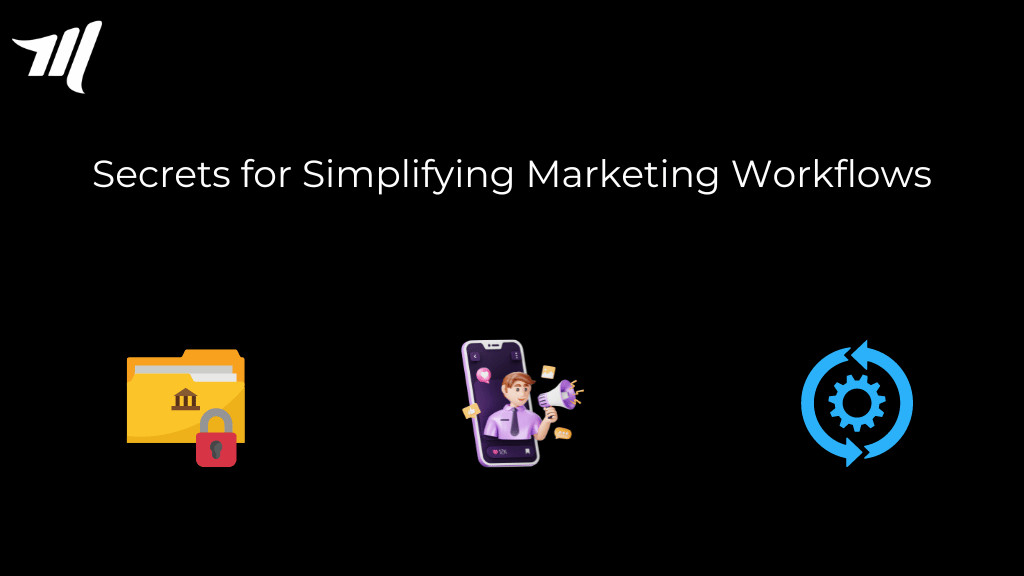Improve marketing cooperation and efficiency by streamlining communication, implementing smart governance, automating tasks, and more.
Marketing now includes complicated workflows and procedures, matrixed stakeholders, and a requirement to act at the speed of culture.
Here, I’ve collected five insights from the world’s most agile and effective marketing teams about how they simplify, standardize, and cooperate to do better work faster.
Spoiler alert: It turns out to be some of our old marketing operations friends: alignment, communication, governance, automation, and strategic alliances.
1. Without a North Star, Efficiency will Rapidly Decrease
The most effective marketing organizations (MEMOs) all have one thing in common: a clear strategic alignment of objectives, priorities, roles, and duties. They are all striving for the same goal; everyone understands their function and how it fits into the bigger picture.
If your squad lacks this alignment, you should stop right now. The remaining secrets will not be useful to you right now. If you are uncertain where your team stands on this, ask them. A brief survey will provide you with enough information to determine what they need to include and where to focus your efforts.
Beyond strategic alignment, MEMOs are project-specifically aligned. They have access to planned and active workloads, project status, and total team capacity. They have a well-established reporting cadence that ensures the relevant information is delivered to the right players at the right time, allowing them to prevent problems before they occur.
Adopting a project management (PM) system such as Workfront, Asana, Trello, or Monday.com may assist give structure and a single point of truth to a North Star for this information. If you have a project management system but aren’t getting the cooperation and results you want, it’s time to rethink your configuration or step up your training and adoption.
2. Consider ‘Right-Communication’ Instead of Over-communication
MEMOs are among the busiest teams, yet they always adhere to clear and consistent communication procedures, even when things become crazy. This includes:
- Communication styles that are unique to the PM tool.
- Types of information appropriate for each channel outside the PM application (for example, chat, Slack, Teams, email).
- Established reaction time standards for each media.
- Agendas for frequent meetings are consistent. Information covered there is not communicated separately since it is redundant.
- Meetings are recorded, and outcomes are documented in a central location. Consider using an AI note-taking app like Otter.ai, which generates transcript summaries automatically.
With a “right-communication” plan in place, everyone is informed and aligned, and there is no need for excessive communication, which clogs the team and slows the speed of work.
3. A Good Governance Model Means Flexibility and Speed
The marketing environment is becoming increasingly complicated, with various matrixed stakeholders, worldwide teams, external partners, and organizational structures flattening out. MEMOs have discovered that a governance model based on “freedom within a framework” helps them strike a compromise between inflexible hierarchical decision-making and the capacity to act at business speed.
MEMOs employ a RACI to determine who is Responsible, Accountable, Consulted, and Informed about each tactical step of their processes, avoiding ambiguity and decision paralysis that kill productivity, create delays, and degrade job quality.
Some teams utilize versions such as RASCI (Responsible, Accountable, Supporting, Consulted, and Informed) to better define responsibilities in highly complex and cross-functional processes. This is the “framework” component.
Along with the RACI or RASCI, MEMOs have a well-articulated system that delegates sign-off authority based on spending thresholds, risk levels, and program types with clear exception and escalation “trap doors” at each step, preventing work stoppages caused by any single individual. This is the “freedom” aspect.
If your team does not already have a RACI or RASCI in place, collaborate with your senior marketing executives and key partners to create one, beginning with the high-level milestones of your process. Then, using feedback from functional leads and tactical SMEs, work your way down to more granular stages.
Think about your exception and escalation pathways carefully. Remember, the goal is to enable teams to do their best with the knowledge they have and keep moving forward. You hired terrific hires; trust them to do the right thing.
You won’t get everything right the first time, and neither will the MEMOs, so be sure to change and reassess as teams, requirements, and workflows develop (which is to say, regularly!).
4. It Helps to have a Slacker Mindset
MEMOs are filled with slackers who strive to automate as many of their tasks as possible. MEMOs indeed have automation in place to complete the majority of their normal activities on schedule and without error, drama, or paid time off.
They’ve demonstrated an improvement in efficiency, and they use the extra time to focus on strategy, creativity, and troubleshooting, which can only be done by people (at least now), resulting in higher-quality work reaching the market sooner.
Work automation tools like Zapier, Hootsuite, HubSpot, and Workfront exist to do everything from automating email campaigns to scheduling social media posts, integrating data across platforms, generating reports, and alerting the next approver in the workflow. They are more accessible and user-friendly than ever before.
If you’re new to automation, doing too much change at once will probably backfire. Start small and give your team time to gain muscle. Identify a few difficult chores that are presently being completed manually (spreadsheets are an excellent place to start), create a small automation, and acquire confidence.
Later, manage procedures involving various systems and workflows, gradually progressing to increasingly complicated situations powered by AI. Baby steps lead to significant productivity increases. MEMOs didn’t arrive in a day either.
5. You’ll Need a Little Help, so Prepare Accordingly
You don’t have to do everything yourself, and you probably shouldn’t. MEMOs don’t either. So let’s discuss outsourcing. Not in the “ship all your jobs overseas” sense, but in the sense of “partner with the best resources for the job” sense.
Outsourcing is MEMOs’ not-so-dirty, not-so-secret technique for developing and sustaining effective operations throughout the year, not only during peak or crunch times. They have a well-defined and planned strategy for outsourcing, including where and why. It decreases internal effort and enables teams to focus on their core competencies.
Tossing random projects over the transom to a stable of partners with available time and hoping for the best will not help you increase efficiency or speed. It will cause swirl and waste.
You require a strategy. Determine whether jobs or perhaps whole skills may be strategically assigned to external specialists. Consider actions that do not require special brand or institutional knowledge, abilities that are used seldom, and gaps (deliberate or unintentional) in your team’s knowledge.
Once your partners have been established and your plan has been implemented, begin with minor projects and progress to larger, more sophisticated ones. Be an effective collaborator and set them up for success. Be proactive and strategic, provide adequate guidance, check in regularly, and provide regular, precise feedback. Your team is still responsible for the project’s success.
Strategies to Connect Your Marketing Workflows
Achieving seamless cooperation and effective processes is a continuous effort. In today’s marketing scene, the destination is a changing goal.
Goals and tactics change, new channels emerge and disappear, projects do not always proceed as planned, pressing priorities arise out of nowhere, and individuals are pushed off track.
However, by using MEMOs techniques for alignment, communication, governance, automation, and partnerships, you may improve your operations and boost marketing’s effect on the company. Don’t be shocked if your staff engagement levels improve.





